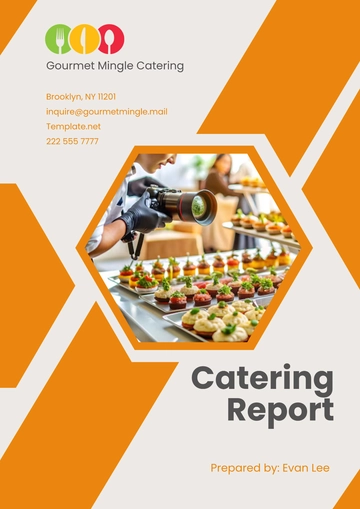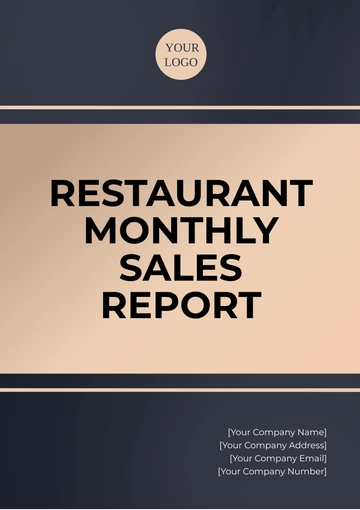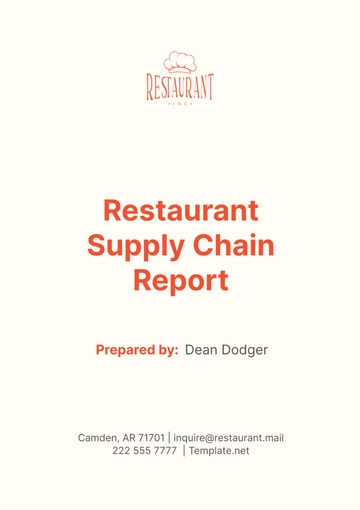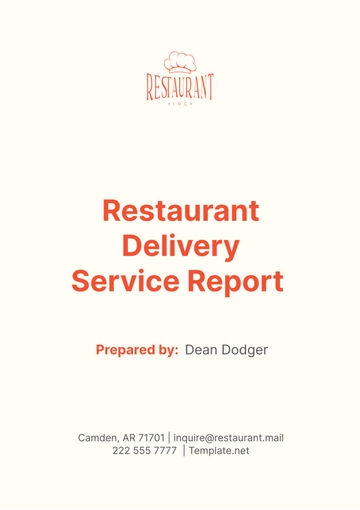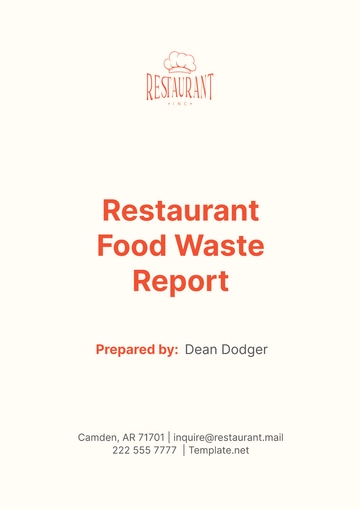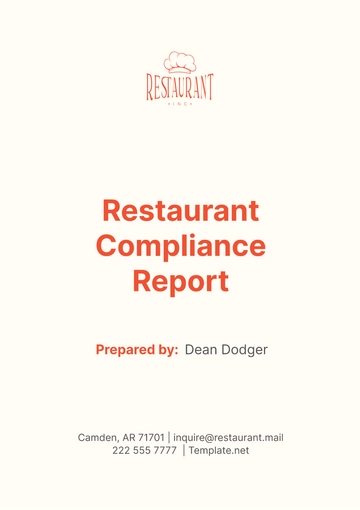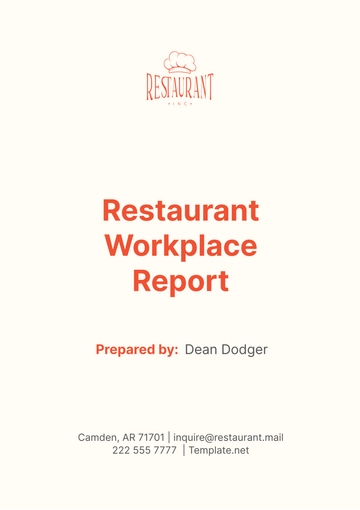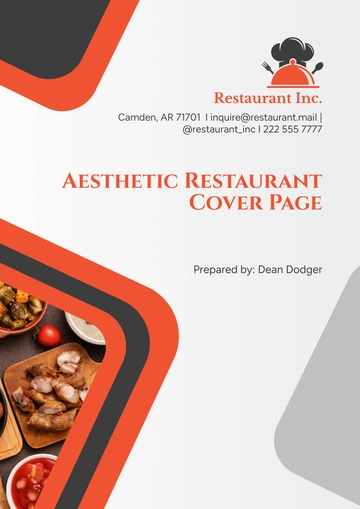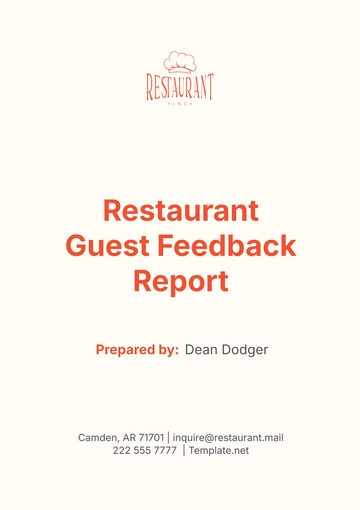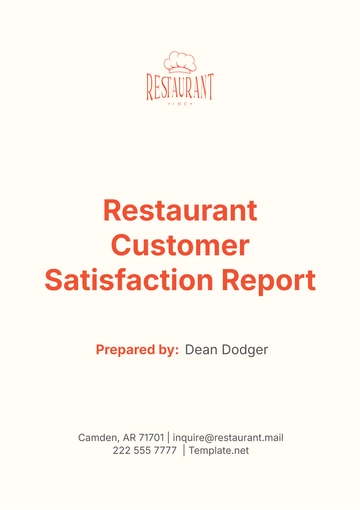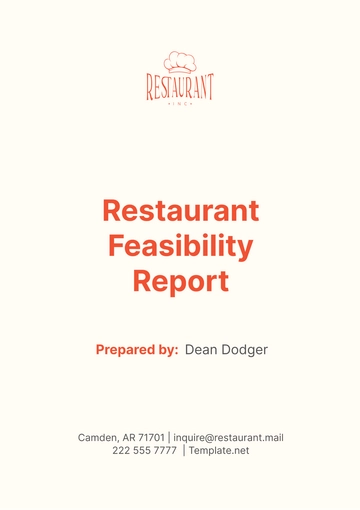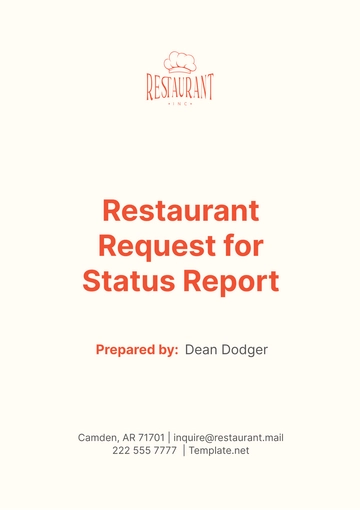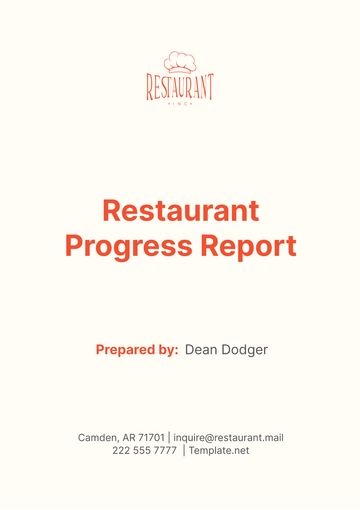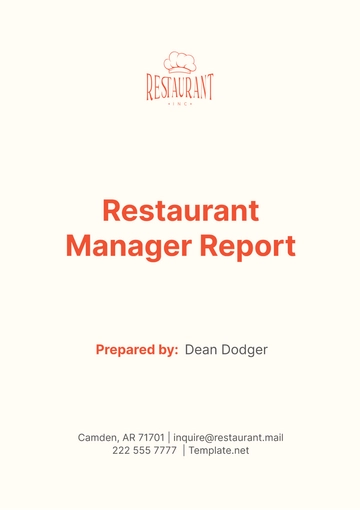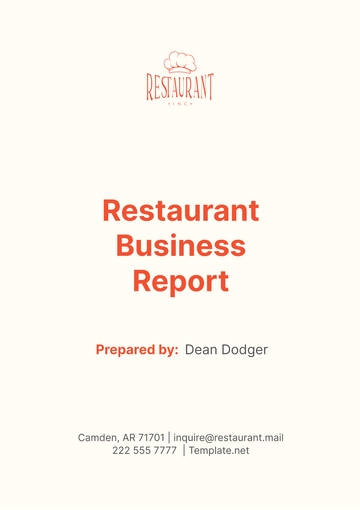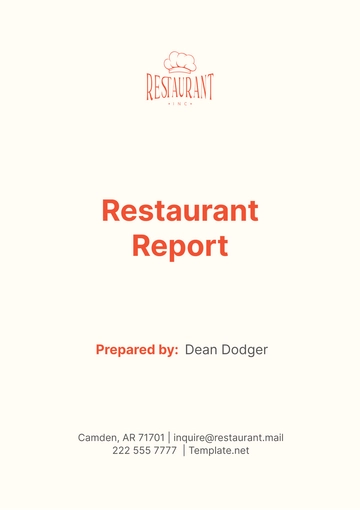Free Restaurant Guest Feedback Report
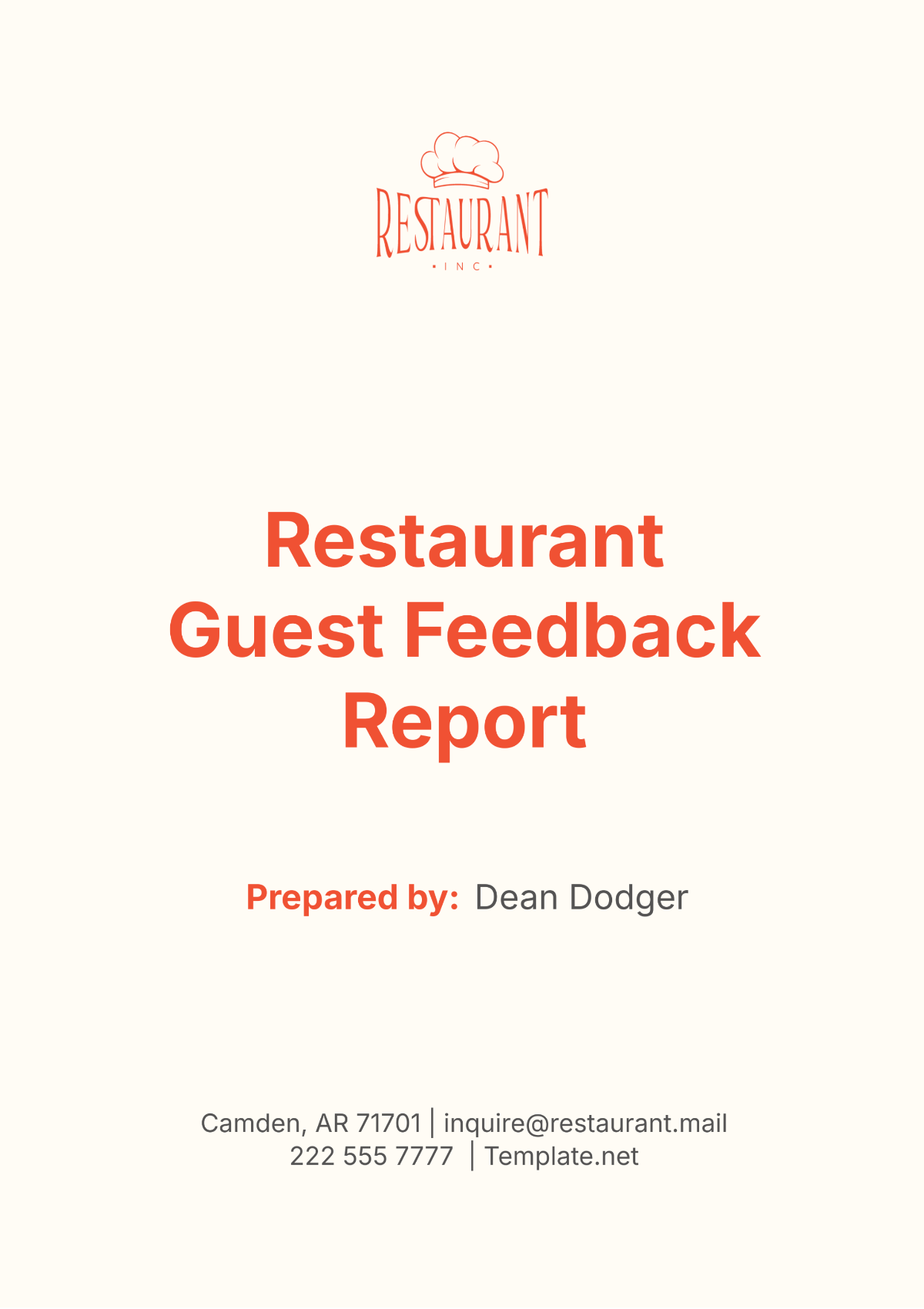
I. Executive Summary
[Your Company Name]'s Guest Feedback Report for the year 2050 provides a comprehensive analysis of customer opinions and experiences. This document aims to highlight areas of excellence and identify opportunities for improvement based on the feedback collected. We have gathered these insights from various sources, including online reviews, direct customer surveys, and in-person interviews.
Overall, customer satisfaction in this period has shown both significant achievements and a few areas needing immediate attention. Key metrics such as average rating, net promoter score (NPS), and common feedback themes are discussed in detail to help management make informed decisions. This report's recommendations are based on these insights and aim to elevate guest experience standards consistently.
II. Objectives
The primary objective of this report is to provide a detailed analysis of guest feedback to enhance overall customer satisfaction at [Your Company Name].
Specific goals include:
A. Identifying the strengths and weaknesses in our current service and product offerings.
B. understanding common themes and recurring feedback from guests; and
C. benchmarking our performance against industry standards and competitors.
Additionally, we aim to implement actionable recommendations that can help in improving guest experience and fostering a loyal customer base. Our long-term goal is to maintain a high level of service excellence and continuously evolve based on guest expectations.
III. Data Collection Methods
To gain a comprehensive understanding of customer sentiments, we employed a multi-faceted approach to collect guest feedback. This robust strategy ensured that we captured a wide range of opinions and experiences from our diverse clientele. The methods used included:
Online Surveys:
Distribution: We sent online surveys to patrons via email and through our website. Invitations were sent to guests within 24 hours of their dining experience to capture their impressions while still fresh.
Response Rate: This method yielded a response rate of 25%, with 500 responses out of 2,000 invitations sent. The survey included a mix of quantitative questions (e.g., rating various aspects of the dining experience on a scale from 1 to 5) and qualitative questions (e.g., open-ended questions about specific experiences and suggestions for improvement).
In-Person Interviews:
Execution: Trained staff conducted in-person interviews at the end of the dining experience. These interviews were brief, typically lasting 5-10 minutes, and focused on immediate feedback.
Topics Covered: Questions addressed food quality, service, ambiance, and overall satisfaction. Staff were trained to ask follow-up questions based on initial responses to gather more detailed feedback.
Sample Size: We conducted 300 in-person interviews during the reporting period, representing a cross-section of our customer base, including first-time visitors and regular patrons.
Social Media and Online Reviews:
Platforms Analyzed: We analyzed feedback from platforms such as Yelp, Google Reviews, TripAdvisor, and various social media channels (e.g., Facebook, Instagram).
Volume of Data: Over the reporting period, we reviewed 1,000 online reviews and social media comments. This method allowed us to understand broader public perceptions and address issues raised in a public forum.
Sentiment Analysis: Advanced data analytics tools were used to categorize and quantify this feedback, identifying trends and patterns. Sentiment analysis helped in distinguishing between positive and negative comments and understanding the intensity of customer sentiments.
Ensuring Data Reliability
To ensure the reliability of the data, all feedback was meticulously categorized and quantified. This rigorous approach involved:
Data Cleaning: Removing duplicate entries and irrelevant comments.
Categorization: Classifying feedback into predefined categories such as food quality, service, ambiance, and other specific aspects of the dining experience.
Quantification: Using statistical tools to convert qualitative feedback into quantifiable metrics, allowing for precise trend analysis.
IV. Key Findings
The feedback analysis revealed several key findings, categorized into positive highlights and areas needing improvement. These insights are crucial for understanding our performance and identifying strategic areas for enhancement.
Positive Highlights:
1. High Praise for Food Quality:
Average Rating: 4.7 out of 5
Specific Feedback: Guests frequently mentioned the taste, presentation, and freshness of the food. Popular dishes like the steak and seafood platters received particularly high praise.
Comments: “Best steak I’ve ever had,” “Amazing flavors,” “Fresh and delicious.”
2. Exceptional Service:
Noted by: 85% of respondents
Attributes Highlighted: Friendliness and attentiveness of staff were commonly mentioned. Guests appreciated the personalized attention and prompt service.
Comments: “Our waiter was fantastic,” “Great service, very attentive.”
3. Ambiance and Cleanliness:
Satisfaction Level: 90% of respondents expressed satisfaction
Highlights: Positive comments focused on the pleasant atmosphere, decor, and overall cleanliness of the restaurant. The comfortable seating and aesthetically pleasing environment were also appreciated.
Comments: “Lovely ambiance,” “Very clean and welcoming environment.”
Areas for Improvement:
1. Long Waiting Times During Peak Hours:
Reported by: 40% of respondents
Issues: Guests mentioned extended waiting times for tables during peak hours, leading to frustration and decreased satisfaction.
Comments: “Waited too long for a table,” “The wait time was excessive.”
2. Menu Variety:
Reported by: 25% of respondents
Suggestions: Some guests expressed a desire for more menu options, including seasonal dishes and dietary-specific items.
Comments: “Needs more variety,” “Would love to see new items.”
3. Temperature Control:
Reported by: 15% of respondents
Issues: A few reviews highlighted discomfort due to inconsistent temperature control within the dining area.
Comments: “Too cold,” “Temperature was not comfortable.”
V. Detailed Analysis
The detailed analysis section dives deeper into specific feedback themes and metrics, providing a comprehensive view of customer sentiments and areas for improvement.
Feedback Category Breakdown:
Feedback Category | Positive Feedback (%) | Negative Feedback (%) |
|---|---|---|
Food Quality | 88 | 12 |
Service | 85 | 15 |
Ambiance | 90 | 10 |
Food Quality:
Positive Feedback: 88% of respondents praised the taste, presentation, and freshness of the food.
Comments: “Best steak I’ve ever had,” “Amazing flavors,” “Fresh and delicious.”
Negative Feedback: 12% mentioned inconsistencies, such as undercooked or overcooked dishes.
Comments: “The chicken was undercooked,” “Steak was too tough.”
Service:
Positive Feedback: 85% highlighted excellent service, mentioning friendly and attentive staff.
Comments: “Our waiter was fantastic,” “Great service, very attentive.”
Negative Feedback: 15% indicated slow service or unprofessional behavior.
Comments: “Service was slow during busy hours,” “Waiter seemed distracted.”
Ambiance:
Positive Feedback: 90% appreciated the restaurant’s ambiance, noting the pleasant atmosphere and cleanliness.
Comments: “Lovely ambiance,” “Very clean and welcoming environment.”
Negative Feedback: 10% mentioned issues such as noise levels and uncomfortable seating.
Comments: “Too noisy,” “Seats were uncomfortable.”
Insights and Implications
Food Quality: The high percentage of positive feedback indicates that [Your Company Name] excels in food quality, which is a cornerstone of our reputation. However, the 12% negative feedback points to occasional lapses in consistency. This suggests a need for more rigorous quality control measures to ensure every dish meets our high standards.
Service: While service is a strong point, the 15% negative feedback indicates areas for improvement, particularly during busy periods. Training programs focused on efficiency and professionalism could help address these concerns.
Ambiance: The overwhelmingly positive feedback on ambiance and cleanliness underscores their importance to the overall dining experience. Addressing the relatively minor concerns about noise and seating comfort could further enhance customer satisfaction.
These metrics provide a snapshot of overall customer sentiment, highlighting areas where we excel and where there's room for improvement. This data is crucial for formulating targeted strategies for enhancement.
VI. Recommendations
Based on the analysis, we propose the following recommendations to enhance the guest experience at [Your Company Name]:
1. Implement a Reservation System
Objective: Reduce waiting times, especially during peak hours.
Action Plan: Introduce an online reservation system allowing customers to book tables in advance. This will help manage the flow of guests and reduce wait times.
2. Introduce Seasonal Menu Items
Objective: Offer more variety and keep the menu exciting.
Action Plan: Develop a rotating menu with seasonal ingredients and special dishes. This approach will not only diversify the menu but also highlight fresh, local produce.
3. Invest in Climate Control Solutions
Objective: Ensure a comfortable dining environment.
Action Plan: Upgrade the HVAC system to maintain optimal temperature and air quality. Consider customer feedback to adjust temperature settings for maximum comfort.
4. Continuous Staff Training
Objective: Maintain high standards of customer service.
Action Plan: Regularly schedule training sessions focused on customer service excellence, problem-solving, and effective communication. Ensure staff are well-equipped to handle complaints and provide exceptional service.
5. Regular Feedback Reviews
Objective: Stay aligned with guests' evolving expectations.
Action Plan: Conduct quarterly reviews of customer feedback and adjust strategies accordingly. Engage staff in these reviews to foster a culture of continuous improvement.
By incorporating these recommendations, [Your Company Name] can improve customer satisfaction levels and foster a more positive dining experience.
VII. Conclusion
The 2050 Guest Feedback Report for [Your Company Name] offers valuable insights into our current performance from the guest's perspective. While we have many strengths, including high food quality and excellent service, we must address the identified areas for improvement to enhance the overall dining experience.
Continuous feedback analysis and implementation of the recommended strategies will be essential in maintaining our reputation and ensuring customer loyalty. This report serves as a vital tool in our ongoing efforts to exceed guest expectations and deliver an extraordinary dining experience.
For further inquiries or detailed discussion, please contact:
[Your Name] from [Your Department] at [Your Company Number]
- 100% Customizable, free editor
- Access 1 Million+ Templates, photo’s & graphics
- Download or share as a template
- Click and replace photos, graphics, text, backgrounds
- Resize, crop, AI write & more
- Access advanced editor
Dive into the world of customer satisfaction with Template.net's Restaurant Guest Feedback Report Template. This comprehensive tool empowers you to gather and analyze guest feedback seamlessly. Utilize our AI editor tool to customize and refine the template according to your restaurant's unique needs. Enhance your understanding of customer preferences and elevate your service standards with Template.net.
You may also like
- Sales Report
- Daily Report
- Project Report
- Business Report
- Weekly Report
- Incident Report
- Annual Report
- Report Layout
- Report Design
- Progress Report
- Marketing Report
- Company Report
- Monthly Report
- Audit Report
- Status Report
- School Report
- Reports Hr
- Management Report
- Project Status Report
- Handover Report
- Health And Safety Report
- Restaurant Report
- Construction Report
- Research Report
- Evaluation Report
- Investigation Report
- Employee Report
- Advertising Report
- Weekly Status Report
- Project Management Report
- Finance Report
- Service Report
- Technical Report
- Meeting Report
- Quarterly Report
- Inspection Report
- Medical Report
- Test Report
- Summary Report
- Inventory Report
- Valuation Report
- Operations Report
- Payroll Report
- Training Report
- Job Report
- Case Report
- Performance Report
- Board Report
- Internal Audit Report
- Student Report
- Monthly Management Report
- Small Business Report
- Accident Report
- Call Center Report
- Activity Report
- IT and Software Report
- Internship Report
- Visit Report
- Product Report
- Book Report
- Property Report
- Recruitment Report
- University Report
- Event Report
- SEO Report
- Conference Report
- Narrative Report
- Nursing Home Report
- Preschool Report
- Call Report
- Customer Report
- Employee Incident Report
- Accomplishment Report
- Social Media Report
- Work From Home Report
- Security Report
- Damage Report
- Quality Report
- Internal Report
- Nurse Report
- Real Estate Report
- Hotel Report
- Equipment Report
- Credit Report
- Field Report
- Non Profit Report
- Maintenance Report
- News Report
- Survey Report
- Executive Report
- Law Firm Report
- Advertising Agency Report
- Interior Design Report
- Travel Agency Report
- Stock Report
- Salon Report
- Bug Report
- Workplace Report
- Action Report
- Investor Report
- Cleaning Services Report
- Consulting Report
- Freelancer Report
- Site Visit Report
- Trip Report
- Classroom Observation Report
- Vehicle Report
- Final Report
- Software Report
